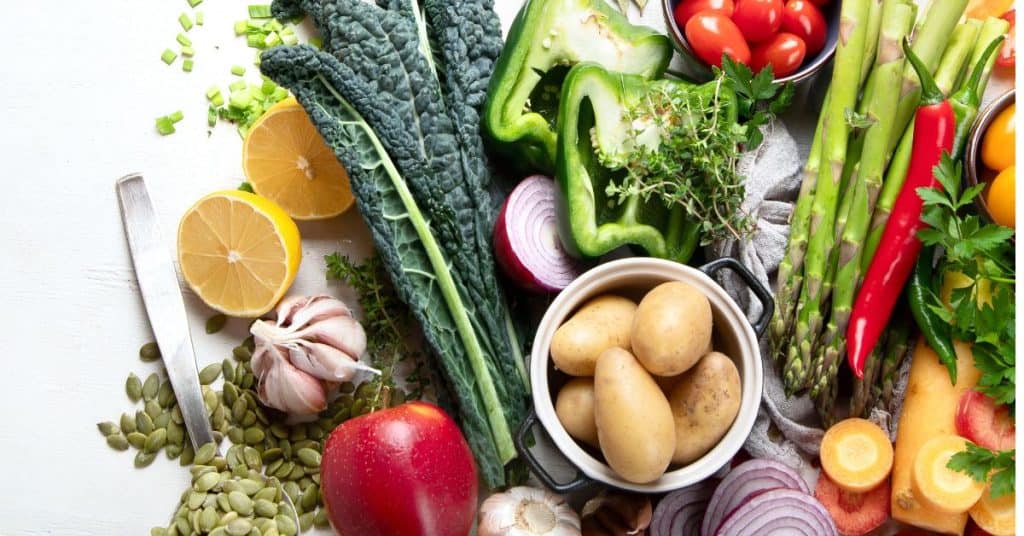Changing your diet to help clear acne sounds simple at first, but when it comes to putting it into action, it’s not always easy. A well-planned diet for acne-prone skin can make a difference, but it’s only one piece of the puzzle—other factors like hormones, genetics, and skincare habits also play a role.
Why Diet Alone Might Not Be the Magic Solution
- Acne Has Many Causes
Diet is only one of the factors influencing acne. Genetics, hormones, stress, and skincare routines also play a role. That means even with a healthy diet, you might still experience breakouts. - Our Eating Habits are Hard to Break
Many of us have favourite comfort foods, and the idea of avoiding them can feel overwhelming. But don’t worry! Small, gradual changes can make a big difference—and you don’t have to give up everything you love.
Remember: You are beautiful as you are, regardless of your skin condition!
The Connection Between Acne and Diet
Certain foods can either worsen or improve acne. Let’s dive into how your diet impacts your skin health.
Foods That May Worsen Acne
1. High Glycemic Index (GI) Foods
High-GI foods cause a rapid spike in blood sugar levels, increasing insulin production, which can trigger acne.
What is the glycemic index?
It’s a measure of how quickly a food raises blood sugar levels within two hours of consumption. Low-GI foods release sugar more slowly, helping maintain steady blood sugar.
Examples of High-GI Foods to Limit:
- Refined Grains: White bread, white rice, pasta from white flour
- Sugary Foods: Candy, cookies, cakes, donuts
- Processed Snacks: Potato chips, pretzels, rice cakes
- Sweetened Drinks: Soda, energy drinks, sweetened teas, fruit juices
- Starchy Vegetables: Potatoes (especially mashed), corn
- Tropical Fruits: Watermelon, pineapple, overripe bananas
Tip: Pair high-GI foods with low-GI foods, protein or healthy fats to slow sugar absorption.

Tip for sugar cravings: Opt for natural alternatives like dates and dried fruits. But remember, even natural sugars should be consumed in moderation!
Beware of hidden sugars:
- Fruit juices (even homemade) lack fiber and nutrients compared to whole fruits.
- Breakfast cereals are often loaded with sugar despite being marketed as “healthy.”
2. Milk and Dairy Products
Milk, especially skim milk, contains hormones and proteins that may aggravate acne. If you suspect dairy affects your skin, consider alternatives like almond or oat milk.
3. Alcohol
While alcohol doesn’t directly cause acne, excessive drinking can dehydrate the skin, weaken its barrier, and increase inflammation—all factors that can worsen breakouts. It may also favour the microorganisms that play a role in pathophysiology of acne.
4. Chocolate
Chocolate’s acne-triggering effects are linked to its sugar and fat content rather than the cocoa itself. Opt for dark chocolate with at least 70% cocoa for a healthier alternative.
Learn more about the glycemic index and its impact on health from Harvard Medical School’s Glycemic Index Chart.
Foods That May Help Improve Acne
1. Low Glycemic Index (GI) Foods
Low-GI foods keep blood sugar levels stable, reducing acne triggers.
Examples:
- Fresh fruits and vegetables (apples, berries, spinach, carrots)
- Whole grains (quinoa, oats, brown rice)
- Beans and legumes
- Nuts and seeds (pumpkin seeds, sunflower seeds)
2. Omega-3 Fatty Acids
Omega-3s reduce inflammation, which can improve acne.
Sources:
- Fatty fish (salmon, mackerel, sardines)
- Chia seeds
- Flaxseeds

3. Vitamins for Clear Skin
Vitamins A, D, and B12 are essential for healthy skin:
- Vitamin D: Found in salmon, mackerel, tuna, egg yolks, and fortified foods like milk and orange juice. Vitamin D deficiency is common in less sunny regions, so consider supplements if needed.
- Vitamin A: Found in carrots, sweet potatoes, spinach, and kale. Orange and green vegetables are rich in beta-carotene, which your body converts to vitamin A.
- Vitamin B12: Found in beef, fish (trout, salmon), eggs, and dairy. For vegans or vegetarians, try fortified plant-based kinds of milk or cereals, or take a supplement.
Takeaway: A Balanced Approach to Diet and Acne
Improving your diet can help manage acne, but it’s not a quick fix. Focus on:
- Low-GI Foods: Stabilize blood sugar levels with whole, unprocessed foods.
- Omega-3s and Vitamins: Incorporate fish, vegetables, and fortified foods into your meals.
- Mindful Eating: Limit high-GI foods, dairy, and sugary treats without eliminating joy from your diet.
Building a diet for acne-prone skin doesn’t mean giving up everything you love. By focusing on low-glycemic foods, healthy fats, and essential vitamins, you can reduce breakouts while maintaining a balanced and enjoyable lifestyle.
Combine these dietary changes with a consistent skincare routine for the best results. Remember, small steps lead to big changes over time.
What’s your experience with the acne-food connection? Leave a comment below to share your thoughts!
Thank you for taking the time to read my article. Your support means a lot! Stay tuned for more pharmacist-approved skin care tips.
